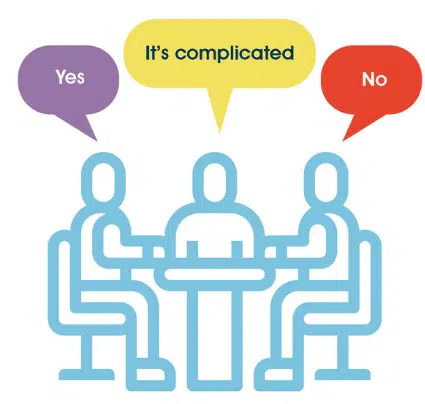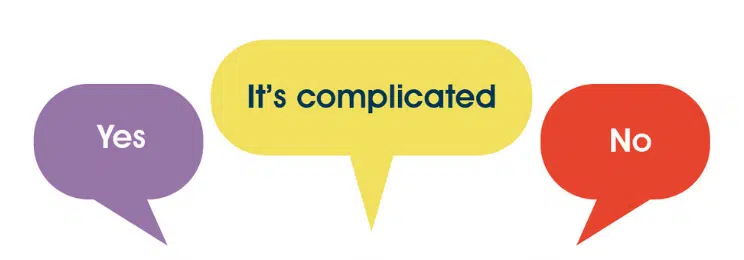Nonprofits, Say Yes To Employee Giving Programs


Full Platform Overview Chat With Us



Full Platform Overview Chat With Us





Never deprive someone the chance to become a philanthropist
There are plenty of reasons to oppose employee giving: Pressure to give. Power dynamic. Staff already give through hours of unpaid overtime. Employees are underpaid. Disproportionately affects the lowest paid employees.
In last week’s post, I looked at five reasons why “oh hell no!” is the response from opponents of employee giving programs. However, this complicated topic has another side: The “heck yeah!” camp, proponents of internal giving asks. And yes, they are just as vocal and adamant about their position!
Let’s review four reasons given why sector pros believe that staff should be invited to become donors.
Everyone is worthy of participating in philanthropic activity. Everyone deserves the opportunity to feel the joy of giving. Donating is not just for people of means.
Employees should be included in the ask.
If employees are passionate about the cause, let them show it in whatever way they choose.
As Jim Martin, Development Manager at Halton Learning Foundation put it: “I believe everyone deserves to be asked. Staff have an incredibly vested interest in the success of the organization. Ask away but in a kind, thoughtful, caring, encouraging way. Same as we’d ask all donors. Give them the reason and give them the choice. But don’t not ask.”
Sector authority Claire Axelrad put it best: “If YOU won’t contribute — and you live and breathe the mission — then why would you expect anyone else to do so? This is the same argument we make to nonprofit Board members who shy away from giving. As nonprofit leaders — and you’re all leaders in your own way — it’s up to you to lead by example. If you’re not setting a good example, you’re setting a bad one.”
Or as the kids say: If you’re going to talk the talk, walk the walk.
A fundraiser who tells donors why they themselves made a gift helps to personalize the story they’re telling. They set an example and demonstrate their pride in the work of the organization by also being a donor. In a donor meeting, that can help add commonality and create a sense of a shared experience.
From a marketing and communications standpoint, I always tell organizations to think about who their key stakeholders are. Often the first thought is donors. The Board. Service recipients. C-level managers.
But what about your ENTIRE STAFF?! All your employees are ambassadors for your organization! No matter what community they live in, they are representatives of your organization and your cause. That means everyone is a potential leader.
No one has to know how much they donated and staff donations to your organization don’t have to be the largest donation they give each year. But letting donors know that staff are also givers sends a powerful message to the community at large.
What if staff who were donors had their name on a wall-of-fame at your institution alongside your other donors? How do you think that would make them feel? Happy. Proud. Honored. A feeling of “I’m one of them.”
Yes, there are many things that can provide that good feeling for staff. But think back to the last time you made a donation. That sensation of joy. Why deprive staff members of that opportunity?!
Not every donor has their name highlighted on a website, annual report or has a plaque on your organization’s donor recognition wall. But think how wonderful it would be if every staff member who donated, regardless of how much they gave, received attention and public acknowledgement for their gift.
After all, if they gave, they are now donors of your organizations. Like your regular donors, if you want employees to give again, you better say a proper thank you and make them feel good. Why? Because donors have a higher recall of the thank you than they do of the actual appeal.
This is one of my biggest pet peeves. My dad taught me: Never judge someone else’s wallet. You have no clue what goes on behind closed doors and you cannot judge by outer appearances how much you think they should be giving to charity.
Which may make this an unpopular opinion among sector experts but I’ll say it anyway: I get upset every time people complain about how little Jeff Bezos or some other billionaire donates to charity. Who are we to decide how people use their money?!
Nonprofit employees are earning less than they would in the for-profit sector. Opponents of employee giving programs feel that it’s “double dipping”– we’ll pay you less than you’d get in the for-profit world AND we’ll take money from your paycheck as a “donation.”
But that assumes we know exactly how much money people have or don’t have! For example, C-level employees are compensated better and potentially have more discretionary income. Therefore, many would say they should be donating a higher amount than lower level employees.
However, we have no way of knowing their personal financial status. Do they have a child at home who needs constant care and part of their medications are not covered by insurance? How about an elderly parent they’re taking care of? Maybe someone is going through a divorce or has college tuition bills to pay.
Never judge someone else’s wallet. The same can apply to asking employees to be givers. Whether they give or choose not to give is up to them. We should not be deciding for them what commitment they can or can’t make.
No one has to know how much they donated and staff donations to your organization don’t have to be the largest donation they give each year. But they can and should be included in the ask.
As Elizabeth Quilter, Nonprofit Strategist and Partner at efquilter.com says: “Don’t judge somebody’s wallet but also don’t judge someone’s heart. ASK!!!”
Just Like A Regular Fundraising Campaign
Your organization has decided to run an employee giving campaign? There are many do’s and don’t’s you need to be aware of.
One very critical component is to make sure that the same rules and best practices you apply (hopefully!) to your regular donor campaigns will be used for your internal giving campaign. That would include:
Employee giving is not a clear cut and dry issue. I’d love to hear what you think about it! I invite you to download and read my ebook on the topic and then message me on LinkedIn or Twitter with your feedback. Whether it’s a no, a yes or ?, hit me up!


Comments
Ephraim
T. Poole